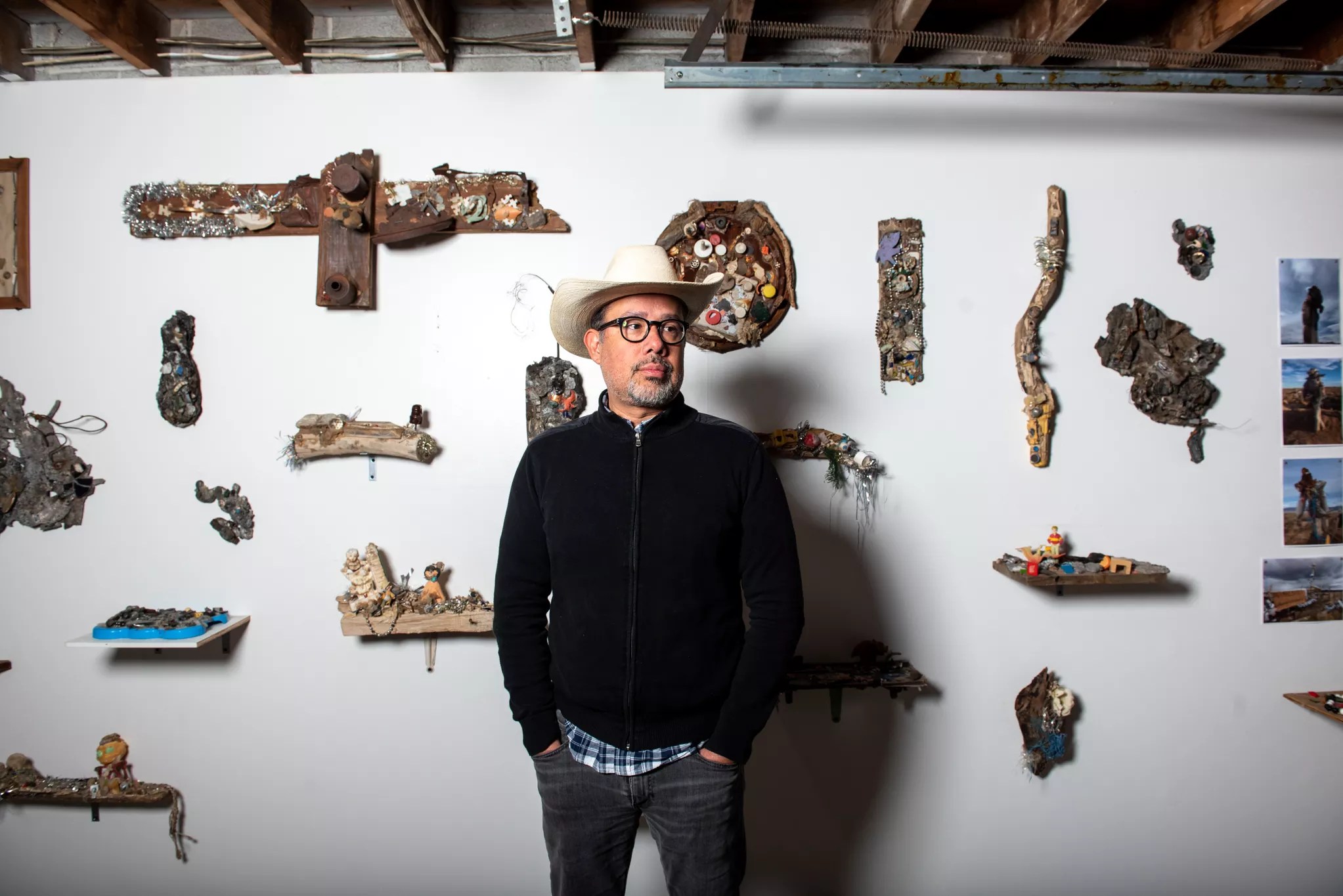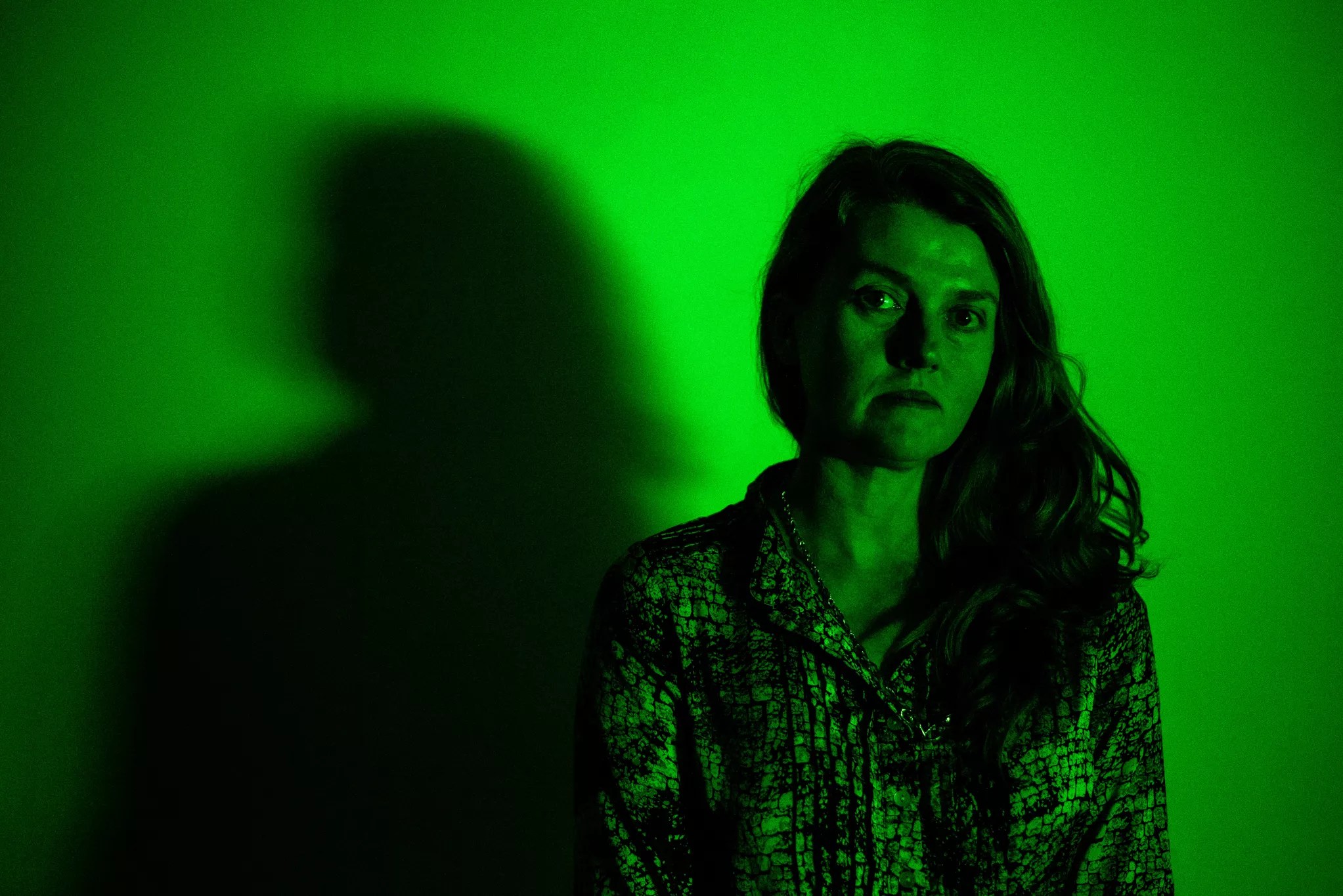
Jake Cox

Audio By Carbonatix
First came the garage, situated behind Sommer Browning’s bungalow at 952 Mariposa Street, just spitting distance from the Art District on Santa Fe.
Browning, a librarian and poet, had zero experience running a gallery, but she was interested in opening one. So she sought the advice of someone who knew how to do it: Cortney Stell, curator and director of the Englewood-based nomadic art museum Black Cube.
“We had one of the funniest meetings, driving around trying to find parking for fifteen minutes before giving up,” Browning recalls. “But we talked in the car. She doesn’t know who I am, but she talked me through this and what it means. To have that connection and someone being like, ‘Go for it,’ was very helpful.”
So Browning went for it, naming her garage space after her daughter, Georgia.
“When it first opened, it was a lot of children under the table,” she recalls. The inaugural exhibition — a solo show titled Future Bodies that highlighted the large-scale collages of Denver-based artist and designer Joshua Ware — opened at Georgia Art Space in September 2017.
In a city where art galleries were being priced out of town and DIY spaces were being shut down by the city for code violations, Browning’s model seemed surprisingly sustainable to Esteban Peralta, who wondered if he could set up something similar in his garage at 747 Elati Street.
Raised in the La Alma/Lincoln Park neighborhood, Peralta had spent several years in the arts communities of San Antonio and Austin, where he’d participated in studio tours and organized gatherings at which artists discussed their works. He reached out to Browning on Twitter to find out how she ran her space.

Sommer Browning is the owner of Georgia.
Jake Cox
After speaking with her, he started asking neighbors if they would be open to him running a similar project out of his garage; ultimately, they said yes. So in July 2018, he debuted his own DIY gallery, Peralta Projects, with a group show of Colorado- and Texas-based artists titled Blue Note: Vacant and Suffused.
“I wanted it to have a facade of a commercial gallery for the first show,” he recalls. “There were faces at the first opening because they just wanted to see what was up. That was by design.”
Both Peralta and Browning buy beer for their openings, but beyond that, there’s little they can afford to do for their artists in these decidedly non-commercial, unfunded spaces, where they are not permitted to sell works.
Browning cut her teeth in the money-strapped poetry scene, participating in what she refers to as “the anti-economy of art.” In other words: Poets are poorly paid, if they’re paid at all. Instead, if they’re traveling through town, they receive an open couch, a home-cooked meal, and whatever simple accommodations can be made for a visiting writer.

Esteban Peralta is the owner of Peralta Projects.
Jake Cox
This model proved surprisingly transferrable to the world of DIY curating. Browning and Peralta offer artists exposure, an opening, a proper record of the exhibition for their CVs, and a chance to mingle with fellow artists working in multiple mediums.
“I’m very aware, and I feel guilty about not paying the artists that show any money to [do it]. So I’m like, ‘Well I’ll buy the beer.’ I feel an obligation to make it a successful space,” Browning says. “If you take the money out, what else is there? It’s the exposure, it’s the party, it’s the risk they can take.”
In Browning’s case, that risk manifested in Adán De La Garza’s The Politics of Frequency, a one-weekend-only exhibition of a fifteen-minute soundpiece requiring multiple speakers blasting hostile noise and total darkness.
“He’s like, ‘I can’t show this anywhere. I can’t even practice or make my art anywhere because it’s so loud,’” says Browning. So he showed it at Georgia Art Space in July 2018.
Browning is intentional about trying to cross-pollinate the various Denver art scenes, organizing openings with shared appeal for filmmakers, visual artists, musicians and the writers from her own literary community.
Both Browning and Peralta are hooked on the curatorial freedom they have in their garage galleries. To maintain their independence, they have resisted applying for grants.
“For me, it’s not about the money. I want to bring exposure to people that I think are important, creative people,” says Peralta.
As for their own ends, Browning and Peralta don’t lose sleep over the sustainability of their respective galleries. Community, not longevity, remains at the core of both Georgia and Peralta Projects’ missions.
“I’m doing it with the idea that it’s very temporary, and I’m okay with that,” says Peralta. “I don’t want to start worrying about what other people are thinking about me.”
Nevertheless, Browning admits that more and more independent artists have learned of their spaces and reached out. She now has enough successful shows under her belt to worry slightly less whether people will show up to openings. She even concedes that she feels legitimate — “in an alley sort of way.”
That’s good enough for Peralta, too, who’s not looking to make this his legacy.
“I’ll probably go another year,” he says. “If I’m still doing this or doing the space ten years from now, I’m going to be a little concerned for myself.”
Do It Yourself
If you’re interested in opening a DIY gallery in your garage and want to do so with the city’s blessing, there are a few regulations you must follow — including calling the space an “art studio” and not selling anything on site, if your home is in an area zoned for low-intensity residential use.
We asked Laura Swartz, spokeswoman with Denver Community Planning and Development, to explain the rules.
“Ultimately, the path forward under zoning and building codes will depend on where the proposed gallery is to be located. Properties that are zoned as mixed-use or industrial typically allow you to include an art gallery with a home under a ‘live/work permit.’ This type of permit is usually issued when someone wants to add a home to an existing studio, office or gallery space, and it involves both zoning and building codes,” she writes.
“If your site is zoned for low-intensity residential uses only and does not allow commercial or mixed-use activity, artist studios can be used to create individual works of art and display them for viewing, provided goods are not sold on site. In these areas, residents can obtain a ‘home occupation permit’ to add the art studio to their home. Anyone can apply for a home occupation permit for their primary place of residence, and if they don’t plan to remodel the home/garage for this purpose, they generally only need the zoning permit and not a building permit.”
For information on getting a home occupation permit to add an art studio to your home, go to denvergov.org. Get a closer look at Peralta Projects, Georgia Art Space and other offbeat venues in our slideshow “Inside Garage Galleries and Other DIY Arts Spaces in Denver.”